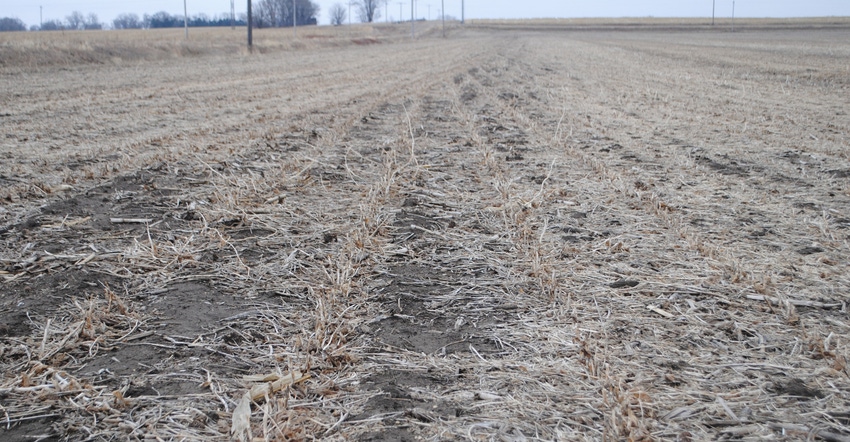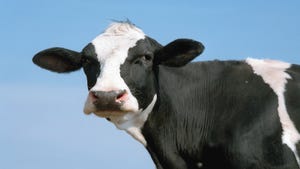
In livestock country, it’s not that uncommon to see cows grazing soybean stubble during the late fall and winter months, perhaps in conjunction with adjacent cornstalks. But is there any feed value at all in the soybean residue?
“Soybean stubble has little value, maybe 4% to 6% crude protein and 35% to 45% total digestible nutrients,” says Ben Beckman, beef systems assistant educator with Nebraska Extension. “The real value of soybean stubble comes from spilled soybeans on the ground.”
According to Beckman, soybeans are around 40% crude protein, 91% TDN and up to 20% fat. That’s why cows spend time in soybean residue, gleaning spilled or shattered soybeans.
The high fat content is what causes issues in grazing in soybean stubble, Beckman says. “Even a mature cow should have less than 10% of its diet on a dry matter basis be from soybeans. Growing calves should have even less — about 5% to 7% — and smaller calves weighing under 300 pounds should have none at all. This shouldn’t be a problem for animals going after a few beans on the ground, but we need to be cautious if there was a lot of shatter or a spill from the wagon.”
Digestion affected
High fat levels can slow fiber digestion. Raw soybeans contain a trypsin-inhibiting enzyme that is important to protein digestion in nonruminants. “Hence the issue with nursing or young calves before their gut really gets going,” Beckman says.
According to a 2019 article by now-retired Nebraska Extension forage specialist Bruce Anderson, cows that are fed only soybean residue can lose weight and condition quickly, so heavy supplementation is necessary to maintain cow health while on soybean stubble.
Anderson says soybean residues have value for grazing or as a baled forage, because they can extend higher-quality hay or silage. But to meet the cow’s energy and protein requirements, supplemental feeds will be needed.
The primary nutrition for winter-grazing cattle comes from corn residues, with potentially some value as a fill-in from soybean stubble. “But the cattle are after the soybeans on the ground — those tasty post-meal treats,” Beckman says. “It’s their ice cream cone after dinner.”
You can learn more by contacting Beckman at [email protected].
About the Author(s)
You May Also Like






